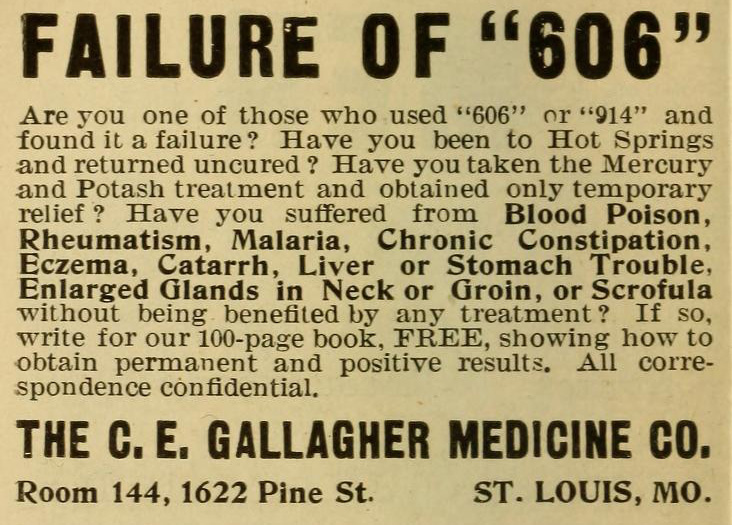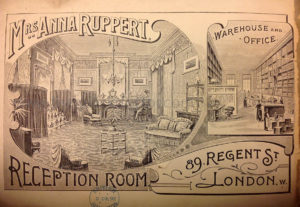 ADvent Calendar Day 20
ADvent Calendar Day 20
This 1915 advertisement is perhaps not as wacky as some of the products I’ve featured this month, but I find it interesting because it names neither the medicine nor the disease it aims to cure! The mentions of ‘blood poison’, ‘Mercury and Potash treatment’ and ‘606’, however, would leave readers in no doubt that this was a treatment for syphilis.
.
In the advertisement, the C E Gallagher Company seeks to discredit the new Salvarsan (‘606’) and Neosalvarsan (‘914’) treatments. These were the first effective antisyphilitic drugs, but as Brandy Schillace at the Dittrick Museum points out, the treatment was painful and potentially dangerous. The C E Gallagher Co used this ammunition to play up the relative pleasantness of their own treatment – which happened to be called ‘Salvar’. I recently acquired a copy of the 100-page book referred to in the ad, so look out for a more detailed post in the New Year!





I sometimes wonder whether the quack medicine industry would have thrived for so long without syphilis and all its horrors. It wouldn’t have been nearly so exciting for the quacks if they only had boring rheumatism to cure!